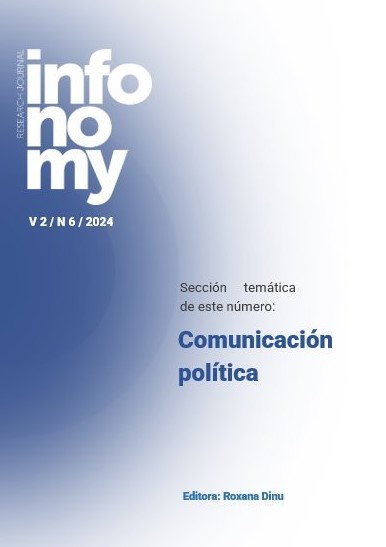Crisis communication management in the DANA disaster in Valencia. Professional vision in the face of new challenges
DOI:
https://doi.org/10.3145/infonomy.24.061Keywords:
Crisis communication, DANA, Isolated Depression at High Levels, IDHL, Cold drop, Institutional communication, Environmental disasters, Young people, Professionals, Communicators, Management model, Case studies, ProposalsAbstract
This work seeks to identify the new needs of crisis communication management taking into account the new social and technological reality. Addressing the shortcomings of the discipline as a result of the indicated changes, an analysis of the current academic and professional situation of the subject is carried out. Taking as a reference the catastrophe caused by the Valencia floods in October 2024, a reflection is carried out on the mistakes made and the possible solutions taking into account the new scenario. To this end, we work with final year students of the Degree in Advertising and Public Relations who are studying the subject of Crisis Communication and who provide a professional vision, but from the point of view of a generation of digital natives.References
Barquero, José-Daniel; Barquero, Mario (2010). Marketing relacional y comunicación para situaciones de crisis. Barcelona: Profit Editorial.
Belver, Marta (2024). ¿Quién es más responsable en la gestión de una crisis como la de la DANA y de quién dependen los tres niveles de alerta en el sistema nacional de protección?. El Mundo, 11 de noviembre. https://www.elmundo.es/espana/2024/11/01/6723e7cf21efa028128b4579.html
Expansión (2024). La DANA es ya el mayor desastre natural de la historia de España. Expansión, 30 de octubre. https://www.expansion.com/sociedad/2024/10/30/67222b71e5fdeabf0e8b4571.html
Gaines-Ross, Leslie (2008). Corporate reputation: 12 steps to safeguarding and recovering reputation. New Jersey: John Wiley & Sons.
González-Herrero, Alfonso (1998). Marketing preventivo. Barcelona: Bosch.
Maharrí, Juan-Antonio (2024). El mes más doloroso: 222 vidas perdidas en 28 pueblos. Las Provincias, 29 de noviembre. https://www.lasprovincias.es/comunitat/mes-doloroso-222-vidas-perdidas-pueblos-20241128004038-nt.html
Mitroff, Ian I.; Pearson, Christine M. (1997). Cómo gestionar una crisis. Barcelona: Gestion 2000.
Torres-Romay, Emma (2005). Estrategias publicitarias en procesos de crisis. Aplicación de un modelo de análisis teórico en casos reales. Revista Fisec_Estrategias, 1(2).
Torres-Romay, Emma (2009). La publicidad como táctica de respuesta a las situaciones de crisis. Questiones Publicitarias, 14, pp. 64-78. https://raco.cat/index.php/questionespublicitarias/article/view/349802
Torres-Romay, Emma (2010). Publicidad y crisis: estrategias eficaces para el desarrollo de campañas publicitarias en contextos de crisis. En: Perlado-Lamo de Espinosa, Marta; Jiménez Narros, Carlos (coords.). Escenario actual de la investigación en comunicación: objetivos, métodos y desafíos. Madrid: Edipo, pp. 360-378.
Tuñez-López, Miguel (2007). La comunicación preventiva. A Coruña: Netbiblio.
Vázquez, Cristina; Velasco, Luis-Enrique (2024). Decenas de miles de personas expresan su hartazgo un mes después de la DANA y piden la dimisión de Mazón. El País, 30 de noviembre de 2024. https://acortar.link/2KO7i9
Zurro-Antón, Noelia; Moreno, Ángeles; Fuentes-Lara, María-Cristina (2021). Comunicación de crisis (2008-2018). Revisión de los principales avances de conocimiento empírico en gestión de comunicación. Profesional de la información, 30(1). https://doi.org/10.3145/epi.2021.ene.07
Downloads
Published
How to Cite
Downloads
Dimensions
Issue
Section
License
Copyright (c) 2024 Emma Torres-Romay

This work is licensed under a Creative Commons Attribution 4.0 International License.




